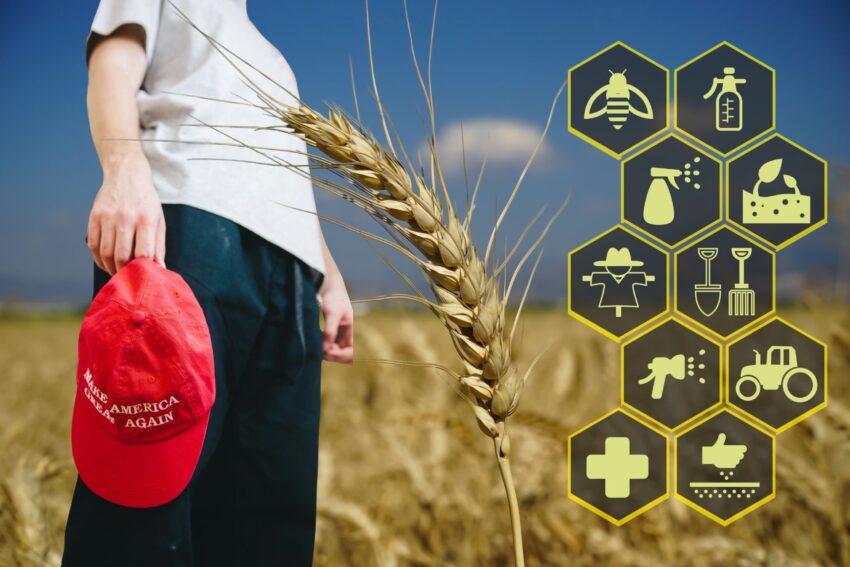The Trump administration’s decision to redirect USDA funding away from climate-smart and DEI (Diversity, Equity, and Inclusion) programs and into has sparked debate, but it’s a move grounded in pragmatism. Farmers are the backbone of our food system, and their focus should be on growing food efficiently—not navigating bureaucratic mandates that prioritize ideological goals over practical outcomes. Here’s why this shift makes sense.
USDA revamps Partnerships for Climate-Smart Commodities into Advancing Markets for Producers initiative https://t.co/6YndinWsVI pic.twitter.com/X1ebUcMUXQ
— Tractor Report (@tractorreport) April 15, 2025
The USDA statement claimed “the majority of these projects had sky-high administration fees which in many instances provided less than half of the federal funding directly to farmers.” USDA indicated select projects may continue if they can prove a “significant amount” of funds will go to farmers, and the agency encouraged projects partners to reapply to continue work “that is aligned with the priorities of this administration.” – AgWeek
CO2: A Plant’s Best Friend, Not a Farmer’s Enemy
Let’s start with a basic truth: carbon dioxide (CO2) is essential for plant growth. It’s the fuel for photosynthesis, enabling crops to thrive. Studies show that elevated CO2 levels can increase crop yields by 10-20% for staples like wheat, rice, and soybeans. Yet, climate-smart programs often push farmers to reduce carbon emissions, framing CO2 as a villain. This is misguided. Farmers shouldn’t be penalized for natural processes that boost productivity. Cutting funding for initiatives that pressure growers to adopt costly, emission-reducing technologies frees them to focus on what they do best: feeding people.
Instead of chasing net-zero goals, farmers need flexibility to use proven, cost-effective tools. Regular fuel sources—think diesel for tractors or natural gas for drying grain—are reliable and affordable compared to the alternatives. Forcing a transition to electric equipment ignores the reality of rural infrastructure and the high upfront costs, which can cripple small operations.
Solar Panels and Wind Turbines: Not the Answer for Farmland
Climate-smart programs often incentivize covering fields with solar panels or wind turbines. This is a poor use of prime agricultural land. Solar farms and wind installations disrupt ecosystems, fragment habitats, and require significant resources to build and maintain. A 2023 study estimated that large-scale solar projects can reduce local biodiversity by up to 20% due to land clearing and soil disruption. Wind turbines, meanwhile, pose risks to birds and bats, with estimates suggesting millions of avian deaths annually in the U.S. alone.
Then there’s the economic side. Installing renewable energy infrastructure is expensive, often requiring subsidies to be viable. For farmers already operating on thin margins, diverting land and capital to these projects is a gamble. Traditional energy sources, like gasoline or propane, remain far more practical, with established supply chains and lower costs. The USDA’s pivot away from funding these green mandates lets farmers prioritize crops over energy experiments.
DEI in Farming: A Distraction from the Real Work
Farming isn’t about ensuring every demographic checkbox is ticked—it’s about producing food efficiently and sustainably. Mandating representation for LGBTQ or other minority groups in an industry where practicality reigns supreme feels like a solution in search of a problem. The USDA’s own data shows that 95% of U.S. farms are family-owned, often passed down through generations. These families aren’t thinking about diversity quotas; they’re thinking about weather, yields, and market prices.
Redirecting funds away from DEI initiatives doesn’t mean excluding anyone—it means trusting farmers to hire and work with whoever’s best for the job, regardless of identity. A merit-based approach ensures that the focus stays on growing food, not meeting arbitrary representation goals.
Don’t Throw Out the Good Stuff
That said, not everything labeled “climate-smart” is a bust. Practices like regenerative agriculture, no-till farming, conservation easements, and organic methods have real benefits. No-till, for instance, can reduce soil erosion by up to 90% and improve water retention, per USDA research. Regenerative practices, like cover cropping, can boost soil carbon levels by 0.5-1 ton per acre annually, enhancing fertility without heavy-handed government intervention. Reducing pesticide use also cuts costs and protects pollinators, which are critical for 75% of global food crops.
These practices don’t need massive funding like Biden’s Inflation Reduction Act, which poured billions into climate programs with questionable returns. Instead, they can be encouraged through tax incentives, cooperative extensions, or peer-to-peer networks. Farmers are practical—they’ll adopt what works if it’s cost-effective and proven. The USDA’s funding shift could still support these ideas indirectly, without the top-down approach that often alienates growers.
A Balanced Path Forward
The USDA’s decision to cancel climate-smart and DEI programs is a step toward empowering farmers. It cuts red tape, prioritizes food production, and avoids wasteful spending on initiatives that don’t align with rural realities. CO2 isn’t the enemy—plants love it. Solar panels and wind turbines don’t belong on farmland when cheaper, reliable fuels exist. And diversity mandates distract from the hard work of feeding a nation.
But let’s not go too far. Scaling back doesn’t mean abandoning practices that protect soil, water, and health. The USDA can still promote no-till, conservation, and regenerative methods through lighter-touch policies that respect farmers’ independence. This is about finding balance: supporting innovation without forcing ideology. Farmers deserve that freedom—and our trust.


